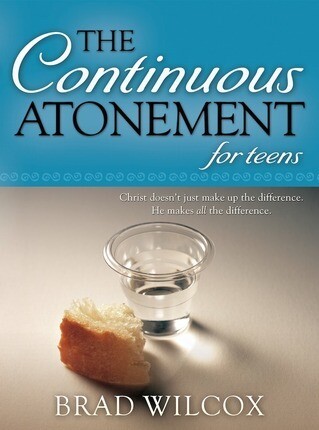Editor's note: This week's Come, Follow Me study includes 2 Nephi 9 which teaches about the Atonement. We wanted to reshare this article from our 2015 archives that gives more insights on this important topic.
Teaching any gospel doctrine can be challenging, but teaching about the Atonement of Jesus Christ—the most important doctrine of all—can seem so overwhelming that we don’t even know where to begin. Here are five principles that can give us a starting point.
1. Know and empathize with the concerns of those you teach.
Has the person you are teaching lost a loved one? It would be important to focus on the resurrection. Is the person struggling with guilt? Teach about forgiveness. Has the person been faced with disappointment or sickness? Talk about the consolation available through the Atonement. Has the person been trying to overcome a bad habit? Testify of the divine help that can be accessed because of the Atonement of Jesus Christ. You may not have had the exact same struggles as those you are helping, but you can still find a way to empathize with what they are feeling.
For example, I have never been tempted by tobacco and do not understand why people smoke and why they have such a hard time quitting. I could easily come across sounding judgmental and annoyed except that I have struggled my whole life with overeating. As I think about how difficult it has been for me to avoid unhealthy foods it gives me a glimpse into the smoker’s challenges. This empathy opens the door for understanding and love—all of which are essential in good teaching.
The best way to come to know learners’ needs is to ask questions before providing answers. Instead of saying, “I know you’ll see your grandfather again.” First say, “What are you going to miss most about your Grandpa?” Instead of starting out by saying, “Jesus understands what you feel.” Try asking, “What has been the hardest part of your current challenge?” Instead of saying, “Smoking is so unhealthy,” ask “How is smoking holding you back from other goals?”
2. Share personal experiences.
True stories from your own life often make it easier for learners to relate to you and understand what you are teaching. Sometimes we think our personal experiences will not be of interest to other people. This is not the case. Stephen R. Covey taught, "The more authentic you become, the more genuine in your expression, particularly regarding personal experiences and even self-doubts, the more people can relate to your expression and the safer it makes them feel" (The 7 Habits of Highly Effective People, 267).
When have you been blessed because of your testimony of the resurrection? When have you felt forgiven? You don’t need to share every detail or names of others involved, but share your feelings. What choices have you made that have surely brought God joy? Share these stories and it will amaze you how they reach others.
3. Use analogies and object lessons.
Difficult concepts are often best understood as we use analogies. I like to compare Christ’s arrangement with us to a mom providing music lessons for her child. Because mom pays for the lessons she can expect the child to practice. I like to compare the memories of past sins to the black lines found in marble. When we repent our sins are washed away, but the memories linger so we can learn from our mistakes. As we are sanctified over time those dark lines do not make us ugly, but rather beautiful and useful to the Lord.
You are not limited to sharing analogies and object lessons used by others. You can create your own. Think of an everyday occurrence or pick up an everyday object. Then ask yourself, “How is this experience or object like an aspect of the Atonement?” No analogy or object lesson is perfect. They all break down at one point or another, but still they catch the attention of those you are teaching and help them stay involved, and that is worth a lot!
4. Invite others to take action.
Jesus taught, “If any man will do [God’s] will, he shall know” (John 7:17). It is not enough to talk about faith, repentance, covenants, or any other aspect of applying the Atonement without also inviting action. Sometimes I actually use the words, "I invite you to . . ." or "I challenge you to . . ." However, I don't always make the invitations quite so obvious. Either way, we need to encourage people to do something about what we have taught: Will you show your faith by coming to church? Will you think about Christ as you partake of the sacrament?
President Monson has taught: “The goal of gospel teaching . . . is not to ‘pour information’ into the minds of class members. . . . The aim is to inspire the individual to think about, feel about, and then do something about living gospel principles” (“Thou Art a Teacher Come From God,” 101; emphasis in original).
5. Share scriptures and testimony.
As you refer to and quote scriptures, your teaching about the Atonement will have greater clarity and authority. Read scriptures with an eye toward using them as you teach others about the Atonement and you will feel more motivated to mark them, remember where to locate them, and even memorize them. Along with the testimonies found in scriptures, share your own testimony. When you do, you stand with Alma and declare, “I testify unto you that I do know that these things whereof I have spoken are true” (Alma 5:45).
In some settings you can share your testimony formally. In other settings it can be more casual and conversational. You don’t have to start by saying, “I would now like to bear my testimony,” or end with saying, “in the name of Jesus Christ, amen.” Simply speak sincerely about what really matters to you—what you have come to know is true.
Teach your teen and help them apply the Atonement in their life with Brad Wilcox's book The Continuous Atonement for Teens. In this book, teens can find ways to understand the Atonement in a way that only beloved Latter-Day Saint author Brad Wilcox can explain. Available now at deseretbook.com.


